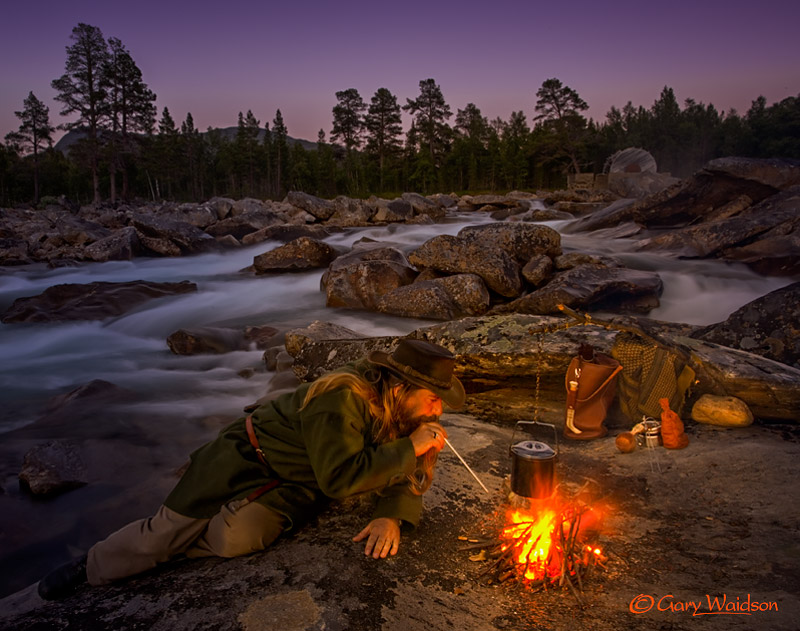
I've been asked about this picture a few times so to kick this new part of the forum off I thought I would tell you a bit about it.
It was taken in Norway on my way to Lofoten to work for the Summer. It's a spot near Lønsdal not far from the E6, just north of the Arctic circle. It's late July and the time was coming up to 10pm.
I wanted a picture for one of the opening pages of my website and had this shot in mind but it would have to be set up a bit.
First of all a layer of river gravel was spread on the rock surface and we collected sticks and branches that had been washed downstream in the floods. One of the sturdier branches was wedged under the rock with a stone to provide a pot crane and the pot was hung with a small piece of chain that lives in my billy for just such occasions.
You'll probably be disappointed to here that I lit the fire with a match, but it was only one at least.
Photographically the challenge was to balance the light from the fire with the natural light and also use a long enough exposure to blur the water too.
The exposure was made at iso. 100, 1.3 Seconds at f22. Any shorter and the water would be too static any longer would be difficult for me to hold the position. The camera is of course on a tripod and Debbie fired the shutter when I was in position.
Now comes the tricky bit.
I nearly always shoot on raw to get the maximum quality that the camera can deliver but it also lets you do some things that are not really possible in other ways.
First of all you can re-set the white balance and secondly you have some control of the "exposure" as well, after the shot has been taken.
This meant I could take one version of the shot that was corrected for the foreground with it's warm fire light and make a second version corrected for the colder light of the background and make that a little darker to enhance the twilight effect.
These two versions of the shot were then manually blended together In PhotoShop to create the image that you see and as I had originally visualised it.
Feel free to ask any questions and I'll answer as best I can.



